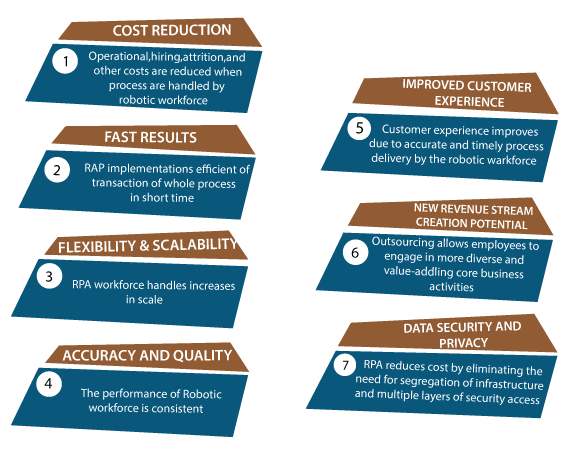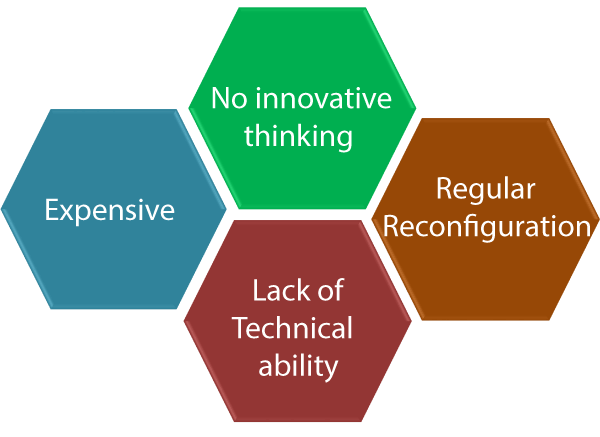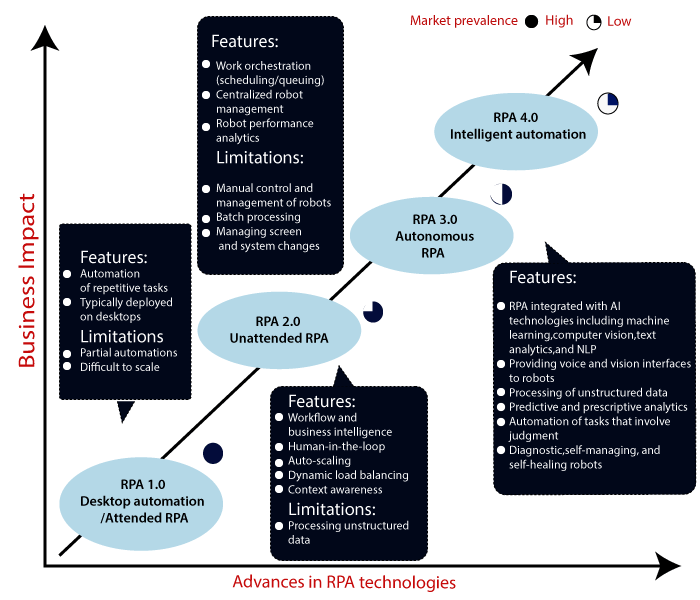RPA Advantages and Disadvantages
Advantages and Disadvantages of RPA
RPA is an automation technology used to develop various kinds of software. It helps in business processes to create an automated task. It is still in the early levels of invention.
RPA is also used to increase the productivity of the organizations. Robots are designed to create repetitive events in different types of companies. The concentration level of doing work goes down by performing repetitive tasks; that's why we use RPA (Robotic Process Automation) to do the tedious task.

Advantages of RPA
There are some advantages of RPA which are given below:
1. The user can reduce the cost by automating the task with the help of Robotic Process Automation.
2. It does not require the user to replace the existing systems by using the virtual workforce.
3. RPA reduces the rate of errors by eliminating human errors such as tiredness, and lack of knowledge, etc. It provides a lower level of operational risk.
4. Deployment of RPA frees up high-value resources to be put back on the front line to ensure customer success.
5. Many companies are forced to define clear governance procedures to use Artificial intelligence and RPA.
6. RPA is a technology with the ability to "take the robot out of the humans." RPA reduces the workload by leaving sufficient time to concentrate on the value-added task. These value-added tasks make a difference between the customer and the business.
Disadvantage of RPA
1. The automated task increases unemployment. RPA is reducing the need for human power, so it has the potential to eliminate the jobs of repetitive tasks. Due to unemployment, labor is increased in the market.
2. The complexity of implementation in RPA has decreased day-by-day. According to a recent study, 30 to 50 percent of the RPA project fails initially.
3. There is no innovative thinking in Robotic Process Automation.
4. The RPA project or system needs regular reconfiguration.
5. It is a costly technology as compare to any other technology.
6. There is a lack of technical ability in the RPA projects.

Figure: Disadvantage of RPA.
Role of Artificial intelligence and machine learning in RPA
The artificial intelligence is used in RPA software. The user can automate the workflow of any organization.
The automation vendor includes machine learning capabilities in automation tools to process a huge amount of unstructured data. It uses advanced image recognition technologies to raise the quality of the Graphical User Interface (GUI) automation.
Machine learning models can be inserted into the workflow of projects. Workflow performs the machine perception tasks such as image recognition. RPA can record a series of tasks that are in the GUI form. RPA records the cursor moves and button clicks, and translate the series of actions into the code. The tasks can be performed automatically due to this code without human intervention in the future.

RPA has optimized some GUI actions by applying machine learning and deep learning algorithm for perception problems like recognizing a button or an edit field.
We can say that the RPA Software Robot is the arm and leg, and the component of machine learning is the "brain." The machine learning models can be inserted into the RPA workflow to perform the perception tasks of machine learning, such as image recognition.